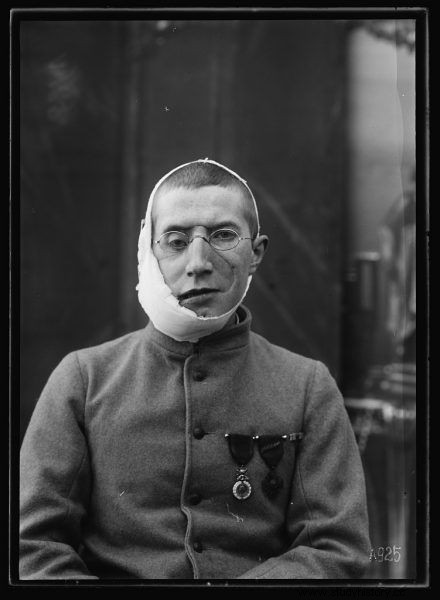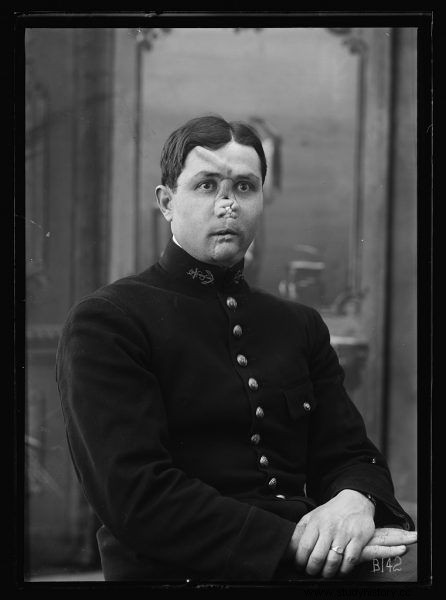Is it magic? We answer:no! It is art and the will to do good. We present the figure of a wonderful woman who wanted to help the victims of World War I. those who have lost their self-confidence and… their face.
World War I led to the deaths of many civilians and soldiers who, if they managed to survive the skirmish at the front, returned the wounded to their homeland. During the fights, the most dangerous were any shrapnel that ricocheted and often fatally wounded soldiers (hence the armies tried to develop armor for soldiers, referring to ancient or medieval armor).
Harold Gillies' fledgling plastic surgery
Medicine has improved significantly since the outbreak of the First World War. Previously fatal wounds could easily be healed (although most soldiers had to contend with scars and disfigurement until the end of their lives). The situation was to be improved by Harold Gillies, considered the father of plastic surgery.
He was born in Dunedin, a city in the southeast of New Zealand. After the outbreak of World War I, he joined the Medical Corps of the Royal Army and served in France as the medical guardian of the French dentist Valadier. Valadier experimented with skin grafts and attempts to reconstruct the jaw.

Walter Yeo is considered the first man. who has undergone plastic surgery. Harold Gillies
operatedHarold, interested in transplant methods, went to Paris to meet surgeon Hippolyte Morestin. While spending time with him, he witnessed a skin transplant from a patient, from whose face a large tumor was removed. Fascinated by this fact, he returned to England to convince the chief military surgeon to create a special department of maxillofacial surgery.
Ultimately, Gillies and his colleagues performed over 11,000 facial reconstructions of wounded soldiers, which laid the foundations for a new field of surgery (during one of the first days of the clinic's existence - in the summer of 1916 - over 2,000 wounded soldiers reported to its unit; all of them took part in the Battle of the Somme).
The sculptor of the new life - Anna Coleman Ladd
During the First World War, the number of disfigured men was huge. Most helmets and special armor did not protect the face. Many men have returned home very disfigured which was a problem mainly for them, because most of them were ashamed of their appearance, others looked at them badly, and additionally refused to return to their families. The scale of this problem was so great that the British government considered creating special colonies for the disfigured, where they could live apart from other people.

Examples of masks made by Anna Coleman Ladd
These sad stories reached the famous sculptor and painter - Anna Coleman Ladd, who decided to open a special studio in Paris. With the help of the Red Cross, Anna and her team created special copper masks that could be attached to the face. Many soldiers could not count on the operation. And if they did manage to have it, often the wound was still very visible and interfered with normal life.

The finished masks looked extremely natural
Anna's masks have become incredibly popular. Were hand painted to best reflect the skin tone of the person who will use it. This work restored a normal life for many victims of the war, they did not feel excluded from social life and they could live peacefully among their loved ones. The feeling of normality and acceptance by society is very important - disfigured veterans could live like others.
Amazing change
Below are photos showing the help provided by Anna Coleman Ladd.

Work on creating a personalized mask for a wounded soldier

Caudron Cavallier playing cards

Anna Coleman helped many injured soldiers

Masks at different stages of work
The effects of the work could be really impressive!

It's hard to imagine what a nightmare the wounded soldiers went through.

A wounded soldier wearing a mask.

War wounds really disfigured the veterans

Masked soldier

The masks allowed the soldiers to lead a normal life

A wounded French soldier without a mask

French soldier seriously wounded during World War I
Bibliography:
- www.gilliesarchives.org.uk [accessed on 28/02/2020]
- www.wyohistory.org [accessed 2/28/2020]
- www.americanhistory.si.edu [accessed 2/28/2020]
- https://www.youtube.com/watch?v=BJzjt_aFc00
